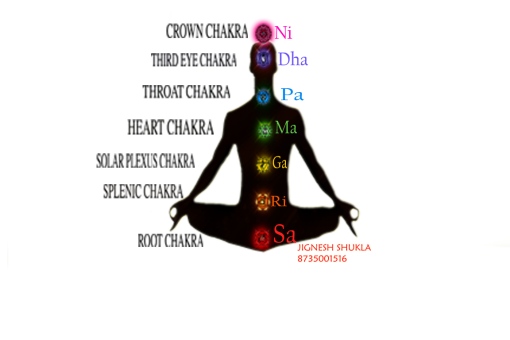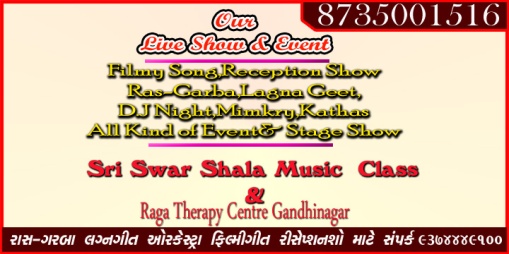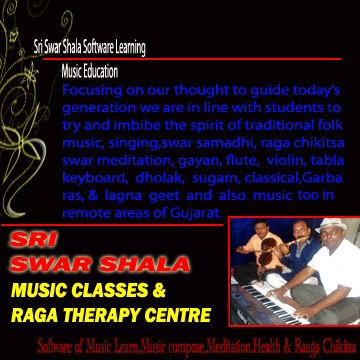કુંડલીની
આપણા પ્રાચીન ભારતીય શાસ્ત્રોના અનુસાર કુંડલીની એ મૂળ પ્રાણ તત્વ છે, જે મનુષ્યને જીવન પ્રદાન કરે છે.જ્યારે માતાનાં ગર્ભમાં બાળક ચાર મહિનાનું થાય ત્યારે આ પ્રાણ તત્વ ગર્ભમાં દાખલ થાય છે. તે બાળકનાં માથાંનાં(તાળવા નાં) ભાગમાંથી પ્રવેશ કરે છે. જેને સહસ્ત્રાર ચક્ર કહેવાય છે. કરોડરજ્જુમાં આવેલા સાત ઉર્જાશક્તિનાં મુખ્ય કેન્દ્રો(ચક્રો)નું ભેદન કરી, મધ્યનાડીમાંથી પસાર થઇ કરોડરજ્જુનાં અંતભાગમાં ત્રિકોણાકાર સ્વરુપે સ્થિર થાય છે. શરીરમાં પ્રવેશ કરતા આ શક્તિ બધાંજ ચક્રોને સક્રિય કરે છે. માતાનાં જે ચક્રો સક્રિય હોય , બાળકનાં તે ચક્રો , તે શક્તિ ગ્રહણ કરી સશક્ત બને છે અને જે ચક્રો આ ઉર્જા ને ગ્રહણ નથી કરી શક્તા તે ચક્ર કમજોર, નબળા રહે છે. દા.ત.ગર્ભાવસ્થા દરમ્યાન જો માતા આત્મગ્લાનીની લાગણી અનુભવે તો બાળકનું વિશુધ્ધિ ચક્ર પ્રભાવિત થાય છે. માતાના અજાણતા થયેલા આ વિચારોના કારણે બાળક આજીવન વિશુધ્ધિ ચક્રના દોષો ભોગવે છે,દરેક કાર્યક્ષેત્રમાં અસફળ રહે છે.
The seven chakras are Sahasrara, Ajna, Vishudhi, Anahatha, Manipura, Swadhistana and Mooladhara. Each chakra is associated with an endocrine gland and controls specific organs. Each swara resonates with one major chakra. When each note is sung concentrating on the shruthi, vibration of the corresponding chakra can be experienced. According to an ancient Indian text, Swara Sastra, the seventy-two melakarta ragas control the 72 important nerves in the body. It is believed that if one sings with due devotion, adhering to the raga lakshana and sruti shuddhi,the raga could affect the particular nerve in the body in a favourable manner.The vibration of the notes activate a chakra and through the nadis emanating from the chakras, the organ at the side of the disease begins the healing process.
Raga is derived from the Sanskrit word ‘ranja‘ meaning ‘color of mind‘. Ragas are composed of ‘shabdas‘. A Shabda, contrary to what many believe, is different from words. Shabda is defined as the cosmic flow of sound. According to this definition, silence is also a shabda. The ancient sages of India had discovered an essential cosmic shabda – ‘Om‘.
The seven suras of Indian music – Sa, Re, Ga, Ma, Pa, Dha and Ni are all derived from cosmic word ‘om’. Ragas are essentially composed of these seven suras and are not songs, but framework upon which melodies can be composed or improvised. Indian music composers were once known for their ability to improvise upon the best and the most difficult of ragas.
Each of the 7 suras have one to one correspondence with the 7 chakras of the human body. Ragas evoke these chakras by increasing the blood flow to and from the region. Different ragas evoke these chakras in different proportions, thereby being able to heal different diseases.
In terms of acoustics (the study of sound), most ragas have 70-75 beats per minute. This is exactly because the heart beats at this rate. A raga with a standard beat has the ability to normalize the human body. A raga with higher beat energizes a person whereas a raga with lower beat is relaxing in nature.
There is a limited amount of scientific literature on the idea behind Indian classical music as a healing therapy. Its position in the genre of healing through music, though proven through the ages, has not been researched and applied as thoroughly and on the scale that it ought to have been. Every parent knows that soothing tones and sounds pacify even the most irritable of babies. Therefore, the primary proof of the efficacy of music or Raga therapy is the lullabies we sing to infants and toddlers. This is later heightened into Raga therapy for more mature perceptions of adults and adolescents. Practitioners of music therapy have living proof of the effectiveness of music in therapeutic applications on a daily basis. They treat conditions like stroke, brain injury, depression, autism, Alzheimer’s disease and many others.
The therapeutic effect of ragas in Hindustani and Carnatic classical music is a time-tested one, described in the ancient system of Nada Yoga. It channelizes vibrations emanating from sounds to uplift the level of the patient’s consciousness. Raga Chikitsa, an ancient manuscript in Tanjore’s Saraswati Mahal Library built by Raja Serfoji, a Maratha king, contains a treasure on ragas and spells out their application and use in fighting common ailments and diseases.
How does the system of Raga therapy actually work? A Raga is the sequence of selected notes (swaras) that lend appropriate ‘mood’ or emotion in a selective combination. It’s a yoga system through the medium of sonorous sounds. Depending on its nature, a raga could induce or intensify joy or sorrow, violence or peace, and it is this quality which forms the basis for musical application. Thus, a whole range of emotions and their nuances could be captured and communicated within certain melodies. Playing, performing and even listening to appropriate ragas can work as a medicine.
To be rendered effective, Ragas are used in a combination with Ayurveda, the ancient science of Vedic healing. A Raga must be played or sung to a patient keeping in mind his/her physical nature of vata, pitta or kapha. The time assigned to the Raga during the day or night is also important. Moreover, it is to be seen whether the time of the day or night is naturally suited to vata, pitta and kapha.
Let’s take an example. Early morning is the natural kapha time for Ayurveda. A kapha-type person should be treated to an early morning Raga like Bhairav, to cure physical imbalances. The later part of the morning and afternoon is pitta time. Raga Bilawal can be used during these hours to treat patients. Late afternoon and evening is vata time, when Raga Pooriya Dhanashri and Marwa can be used as a cure. It is very important, however, that the Ayurvedic constitution of the patient be kept in mind – as to whether he or she is a vata, pitta or kapha person.
The people at the core of this treatment would be the music therapist, the client, the clinical facility whether at home or in a hospital, and music providers. Music therapists interact with their clients and the use of music. They assess their clients and create a clinical plan for treatment in coordination with the team and client goals. This is what determines the course of clinical sessions. A music therapist works within a client-centered, goal-directed framework.
Warning Sign of Diabetes: Thirst
Although people with type 2 diabetes may not have specific symptoms, an increase in thirst is one symptom that is characteristic of the condition. The increased thirstcan accompany other symptoms like frequent urination, feelings of unusual hunger, dry mouth, and weight gain or loss.
What Is Type 2 Diabetes?
Type 2 diabetes can affect all people, regardless of age. Early symptoms of type 2 diabetes may be missed, so those affected may not even know they have the condition. An estimated one out of every three people with type 2 diabetes are not aware they have it. Diabetes interferes with the body’s ability to metabolize carbohydrates for energy, leading to high levels of blood sugar. These chronically high blood sugar levels increase a person’s risk of developing nerve problems, vision loss, cardiovascular disease, and other conditions.
| Time | Raga | Benefit |
| 4am – 7am | Raga Bhairavi Raga Bhairava Ragas Ramakali & Jogiya |
emotional strength ,Devotion and Peace Peace Integration, Compassion Peace & Serenity |
| 7am – 10am | Raga Komala Rishabha Asawari Raga Deshkara Raga Jaita Raga Gurjari Todi Raga Todi Raga Alahiya Bilavala |
serenity Increased Energy Dynamism Compassion ,Patience Joy Peace and Happiness |
| 10am – 1pm | Ragas Gauda & Vrindavani Saranga Raga Shuddha Saranga Raga Ahir Lalita Raga Vrindavani Saranga |
wisdom Success, Knowledge Joyfulness Greater Energy |
| 1pm – 4pm | Raga Multani Raga Madhuvanti Raga Samanta Saranga Raga Bhimapalasi |
Achievement, Affuence Happiness Creativity Life |
| 4pm – 7pm | Ragas Kafi & Madhuvanti Raga Mishra Pilu Raga Puriya Dhanashri Raga Marwa Raga Puriya Kalyana |
Creativity and Happiness Celebration & Joyfulness Relaxation Coherence ,Happiness Harmony |
| 7pm – 10pm | Ragas Puriya & Rageshri Raga Hansadhwani Raga Maru Bihaga Raga Desh Raga Durga Raga Maru Bihaga |
Harmony and Rejuvenation Celebration & Happiness Compassion Joy Integration Compassion |
| 10pm – 1am | Raga Darbari-Kanhra Raga Bageshvari Raga Gunji Kanada Raga Abhogi Raga Malkaunsa |
Restful Quality of Sleep Relaxation & Rest Better Sleep Peaceful Slumber Restful Sleep ,Tranquility |
| 1am – 4am | Raga Sohini & Bhatiyara Raga Basanta Raga Sindhu Bhairavi Raga Lalita Raga Nata Bhairava |
Healthy Mind and Body Love & Happiness Gentleness Peace & Tranquillity Serenity |
MUSIC THERAPY – ” For – Brain, Body & Soul “
The entire concept of Music Therapy is experimental. For me it is a kind of YOGA,which acts upon the human organism and awakens and develops their proper functions to extent of self-realisation.
Music therapy is a scientific method of effective cures of disease through the power of music. It restores, maintains and improves emotional, physiological and psychological well being. The articulation, pitch, tone and specific arrangement of swaras (notes) in a particular raga stimulates, alleviates and cures various ailments inducing electro magnetic change in the body.
Music is basically a sound or nada generating particular vibrations which moves through the medium of ether present in the atmosphere and affects the human body. Music beats have a very close relationship with heart beats. Music having 70-75 beats per minute equivalent to the normal heart beat of 72 has a very soothing effect. Likewise rhythms which are slower than 72 beats per minute create a positive suspense on the mind and body. Rhythms which are faster than the heart rate excite and rejuvenate the body.





Leave a comment